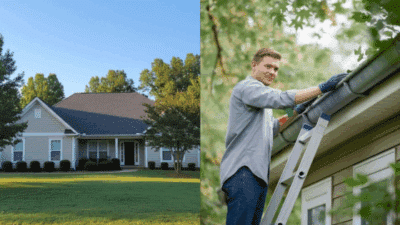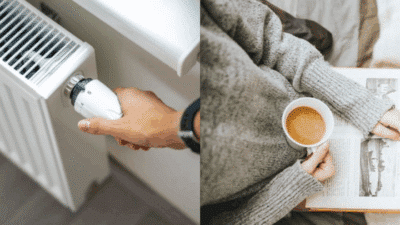
There’s something profoundly appealing about owning a slice of Australian countryside. Whether you’re running a working farm, establishing a hobby homestead, or simply seeking a lifestyle change away from urban chaos, rural property ownership offers unmatched freedom and opportunity. But with that independence comes responsibility—and the need to establish reliable systems that keep your property running smoothly, safely, and securely.
Unlike city living where services are readily available at your doorstep, rural properties demand a different approach to essential infrastructure. You’re not just maintaining a home; you’re managing an entire ecosystem of utilities, safety measures, and operational systems. The difference between a thriving rural property and a constant source of stress often comes down to how well you’ve planned for the fundamentals: access to clean water, electrical reliability, and comprehensive security.
This guide explores the critical infrastructure elements every rural property owner should prioritize, offering practical insights drawn from real-world experience with Australian conditions, climate, and unique challenges.
Understanding Your Water Needs Beyond the Tap

Water is the lifeblood of any rural property, yet it’s often the most underestimated aspect of rural planning. While city dwellers take municipal water supply for granted, rural property owners face an entirely different reality. Tank water, bore water, and dam systems each come with their own maintenance requirements, quality concerns, and potential failure points.
The first challenge many new rural property owners encounter is water quality. Tank water can develop algae blooms, sediment buildup, and bacterial contamination if not properly maintained. Bore water often contains high mineral content that affects taste and can damage appliances over time. Even well-maintained systems can produce water that’s technically safe but unpleasant to drink or cook with.
This is where many rural households discover the value of having a reliable backup for drinking and cooking water. Rather than dealing with complex filtration systems or worrying about seasonal quality variations, accessing professional spring water delivery provides peace of mind that your family always has access to premium drinking water, regardless of your primary water system’s condition. It’s particularly valuable during dry spells when tank levels run low or after heavy rains when runoff can compromise water quality.
Beyond drinking water, you need to plan your property’s water usage strategically. Calculate your household consumption, garden irrigation needs, livestock requirements if applicable, and emergency reserves. Most rural property consultants recommend maintaining at least a two-week supply of backup water beyond your standard usage—but many experienced property owners aim for a month or more.

Consider water storage redundancy. Multiple smaller tanks often provide more flexibility than a single large one, allowing you to isolate problems, perform maintenance, and ensure continuous supply. Position tanks strategically around your property to maximize collection from different roof areas and provide convenient access points for various uses.
The investment in proper water infrastructure pays dividends immediately and continues to appreciate as you understand your property’s rhythms through different seasons. Drought years will test your planning, but they’ll also validate the wisdom of establishing multiple water sources and backup systems before you desperately need them.
Electrical Safety and Reliability in Remote Locations
If water is the lifeblood of your property, electricity is its nervous system. Everything from your water pumps to your refrigeration, communication systems, and security equipment depends on reliable power. Yet rural electrical systems face unique challenges that urban infrastructure rarely encounters.
Distance from major power grids means rural properties often experience longer outage durations. A storm that causes a brief flicker in Melbourne’s suburbs might leave rural areas without power for hours or even days. This isn’t negligence from power companies—it’s simply the reality of maintaining infrastructure across vast distances with lower population density.
The extended exposure to weather elements also takes its toll on rural electrical systems. Overhead lines face constant assault from wind, falling branches, wildlife interference, and UV degradation. Underground systems, while better protected from weather, can suffer from moisture penetration, root intrusion, and damage from ground movement or farming activities.
Your property’s internal electrical system requires equally careful attention. Rural homes often incorporate workshops, sheds, pump houses, and other outbuildings that expand your electrical footprint considerably. Each structure requires proper wiring, adequate circuit protection, and weatherproof fittings suited to agricultural environments.
Many rural properties also run mixed systems that combine grid power, solar installations, and backup generators. These complex setups require specialized knowledge to install, maintain, and troubleshoot safely. DIY electrical work might seem tempting for handy property owners, but the stakes are simply too high. Electrical fires in remote locations face delayed emergency response, and the consequences can be catastrophic.
This is precisely why establishing a relationship with a qualified emergency electrician Melbourne area can serve should be a priority, even if your property lies in the outer regions. Electrical emergencies don’t respect business hours or weather conditions. A fallen tree that brings down your power lines at midnight, a pump failure during a heat wave, or a suspected electrical fault that’s triggering safety switches all require immediate professional attention.
When evaluating electricians for rural work, look for those with specific experience in agricultural and remote property electrical systems. They should understand solar integration, generator connections, pump systems, and the special requirements of three-phase power for heavy machinery. They should also be equipped to travel to remote locations and work in challenging conditions.
Regular electrical inspections become even more critical on rural properties due to the expanded infrastructure and exposure to harsh conditions. Schedule annual reviews of your main systems, and don’t ignore warning signs like flickering lights, warm outlets, burning smells, or frequently tripping circuit breakers. These aren’t minor inconveniences—they’re urgent safety warnings that require professional assessment.
Consider investing in surge protection throughout your property. Lightning strikes are more common in rural areas, and the damage from a direct hit or nearby strike can destroy thousands of dollars in appliances, electronics, and equipment in an instant. Whole-property surge protection, combined with point-of-use devices for sensitive equipment, provides layered defense against these devastating events.
Securing Your Investment: Property Monitoring and Protection

Rural properties present unique security challenges that urban security systems simply aren’t designed to address. The very features that make rural living appealing—space, privacy, and distance from neighbors—also create vulnerabilities that require thoughtful security planning.
Traditional security approaches focused on perimeter fencing and alarm systems fail to account for the realities of large rural properties. You might have boundary lines stretching for kilometers, making comprehensive physical barriers impractical and expensive. Response times for police and security services can extend to 30 minutes or more in remote areas, meaning your security system needs to do more than just alert—it needs to deter and document.
Modern technology has revolutionized rural security by making comprehensive property monitoring both practical and affordable. Strategic placement of quality surveillance equipment allows you to monitor gates, access roads, equipment yards, livestock areas, and vulnerable buildings from anywhere. But not all security cameras are created equal, and rural applications demand specific features that consumer-grade systems often lack.
Weather resistance tops the list of requirements. Rural cameras face extreme temperature variations, direct sun exposure, dust, rain, and in coastal areas, salt-laden air. Equipment rated for outdoor use in suburban gardens won’t withstand these conditions long-term. Purpose-designed agricultural surveillance equipment is built to survive and function reliably in harsh Australian conditions.
Night vision capability is equally critical. Most stock theft and property crime occurs under cover of darkness, and rural properties lack the ambient light that helps urban cameras function. Quality infrared or starlight cameras can capture clear footage even on moonless nights, providing the evidence needed for insurance claims and police investigations.
Investing in a professional security camera for farm monitoring creates a visible deterrent while providing comprehensive documentation of all property activity. Modern systems allow remote viewing via smartphone, meaning you can check on your property from town, work, or even while traveling. This capability proves invaluable for monitoring contractor access, checking livestock during difficult seasons, or simply maintaining awareness of property conditions.
Beyond theft prevention, security cameras serve multiple operational purposes on working properties. Monitor calving or lambing paddocks without constant physical patrols. Track feed deliveries and contractor work. Review footage to understand how wildlife interacts with your fencing or crops. Document weather events for insurance purposes. The applications extend well beyond traditional security.
Consider camera placement strategically. Gates and property entrances are obvious priorities, but also think about equipment storage areas, fuel tanks, water infrastructure, and any valuable or portable items. Create overlapping coverage zones where possible, ensuring that approaching individuals are captured by multiple cameras from different angles.
Power supply for remote cameras deserves special attention. Running power cables to distant monitoring points is expensive and vulnerable to damage. Solar-powered camera systems with battery backup offer excellent solutions for perimeter monitoring points beyond practical cable reach. Modern solar units are surprisingly robust and can maintain operation even through winter months with reduced sunlight.
Network connectivity presents another consideration. While some systems require WiFi or cellular connections for live viewing, others record locally to SD cards or network video recorders, reducing bandwidth requirements while still capturing critical footage. Hybrid systems that store locally but alert via cellular connection when motion is detected offer excellent compromise between functionality and data usage.
Building Resilience Through Redundancy

The common thread running through water, electrical, and security infrastructure is the concept of redundancy. Rural properties can’t rely on quick fixes or immediate assistance when systems fail. Building multiple backup layers into your essential infrastructure isn’t paranoia—it’s prudent planning.
For water, this means multiple storage points, backup supply sources, and the flexibility to shift between systems as conditions demand. For power, it means considering generator backup, solar systems, and maintaining relationships with qualified emergency electricians who understand your property. For security, it means layered approaches that combine cameras, lighting, physical barriers, and community awareness.
The upfront investment in robust infrastructure might seem substantial, but it pales in comparison to the costs of system failures. Calculate the value of your livestock, equipment, stored crops, and structures. Consider the cost of replacing spoiled food after extended power outages, the expense of emergency water deliveries during drought, or the impact of undetected theft or vandalism. Proper infrastructure isn’t an expense—it’s insurance with immediate benefits.
Start with a comprehensive property assessment. Walk your boundaries with an eye toward vulnerability. Identify critical systems and single points of failure. Where are you one breakdown away from serious problems? These are your priorities for infrastructure investment and backup planning.
Develop relationships with service providers before emergencies strike. Know who to call for water delivery, electrical emergencies, security system maintenance, and equipment repairs. Test these relationships with routine service calls so you understand their response times, capabilities, and limitations. The middle of a crisis is not the time to be searching for qualified help.
Document your systems thoroughly. Create maps showing water lines, electrical circuits, camera locations, and access points. Store equipment manuals, warranty information, and service provider contacts in both physical and digital formats. When systems fail or require maintenance, this documentation saves precious time and prevents errors.
Seasonal Preparation and Maintenance Cycles

Australian rural properties experience dramatic seasonal variations that stress different infrastructure elements at different times. Summer challenges your water supplies, electrical cooling systems, and fire security. Winter tests heating systems, pump protection, and storm resilience. Each season demands specific preparation and maintenance.
Develop a seasonal checklist that addresses each infrastructure element. Before summer, verify water storage levels, test backup systems, clear gutters to maximize rainfall capture, service air conditioning, and ensure fire security measures are current. Before winter, protect exposed pipes from freezing, check heating systems, prepare for storm season, and verify emergency lighting and power backup.
These seasonal transitions also provide natural review points for your overall property planning. What challenges emerged during the previous season? What systems underperformed? What improvements would provide the most value? Use these regular checkpoints to continuously refine and improve your property infrastructure.
Investing in Knowledge and Skills

While professional services are essential for many aspects of rural property management, developing your own knowledge and skills multiplies the effectiveness of every infrastructure investment. Understanding how your water systems work helps you maintain them properly and recognize problems early. Basic electrical knowledge helps you use power safely and communicate effectively with electricians. Security system familiarity ensures you use your monitoring equipment to its full potential.
Seek out workshops, online courses, and experienced neighbors who can share practical knowledge. Rural property ownership includes continuous learning, and every skill you develop increases your property’s resilience and reduces dependence on external services for routine matters.
However, know your limits. Confidence is valuable, but overconfidence is dangerous. Complex electrical work, significant infrastructure modifications, and specialized installations all require professional expertise. The goal isn’t to do everything yourself—it’s to understand your systems well enough to maintain them properly, recognize problems early, and work effectively with professionals when their expertise is needed.
Conclusion: Building Your Rural Property Foundation

Creating a successful rural property requires more than land and structures—it demands robust infrastructure that supports your lifestyle, protects your investment, and provides the reliability that remote living requires. Water security, electrical safety, and comprehensive security monitoring form the foundation upon which everything else is built.
The properties that thrive are those where owners have invested thoughtfully in these fundamentals before crisis forces reactive spending. Start with an honest assessment of your current systems and vulnerabilities. Prioritize improvements that address critical gaps and single points of failure. Build relationships with qualified professionals before you need them urgently. And embrace the mindset of continuous improvement, recognizing that rural property management is an ongoing journey rather than a destination.
Your rural property represents more than real estate—it’s a lifestyle choice, a business investment, or a family legacy. Protecting and enhancing that investment through proper infrastructure planning isn’t an optional luxury. It’s the fundamental requirement for transforming land into a truly sustainable and secure rural property that serves you reliably for decades to come.
- 0shares
- Facebook0
- Pinterest0
- Twitter0
